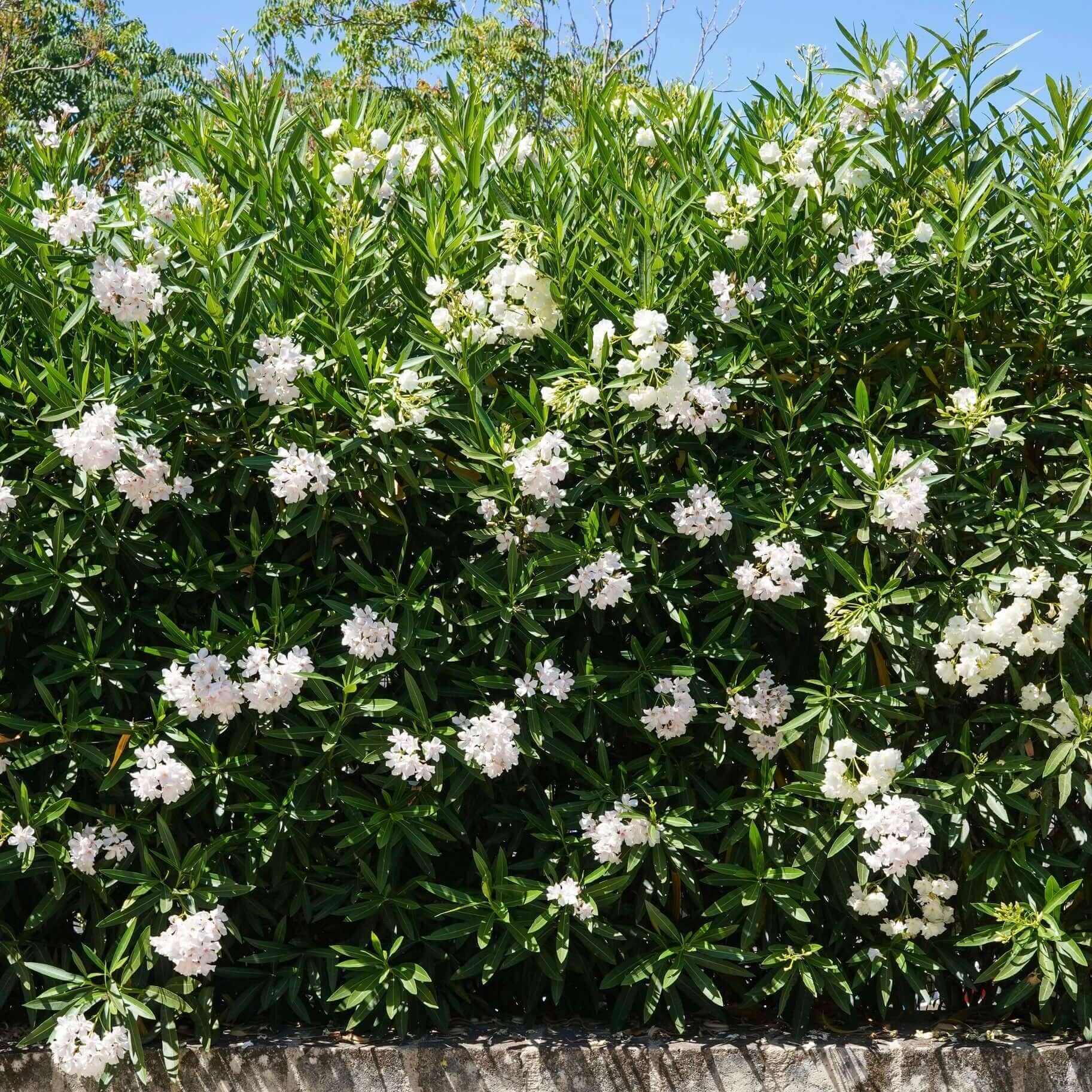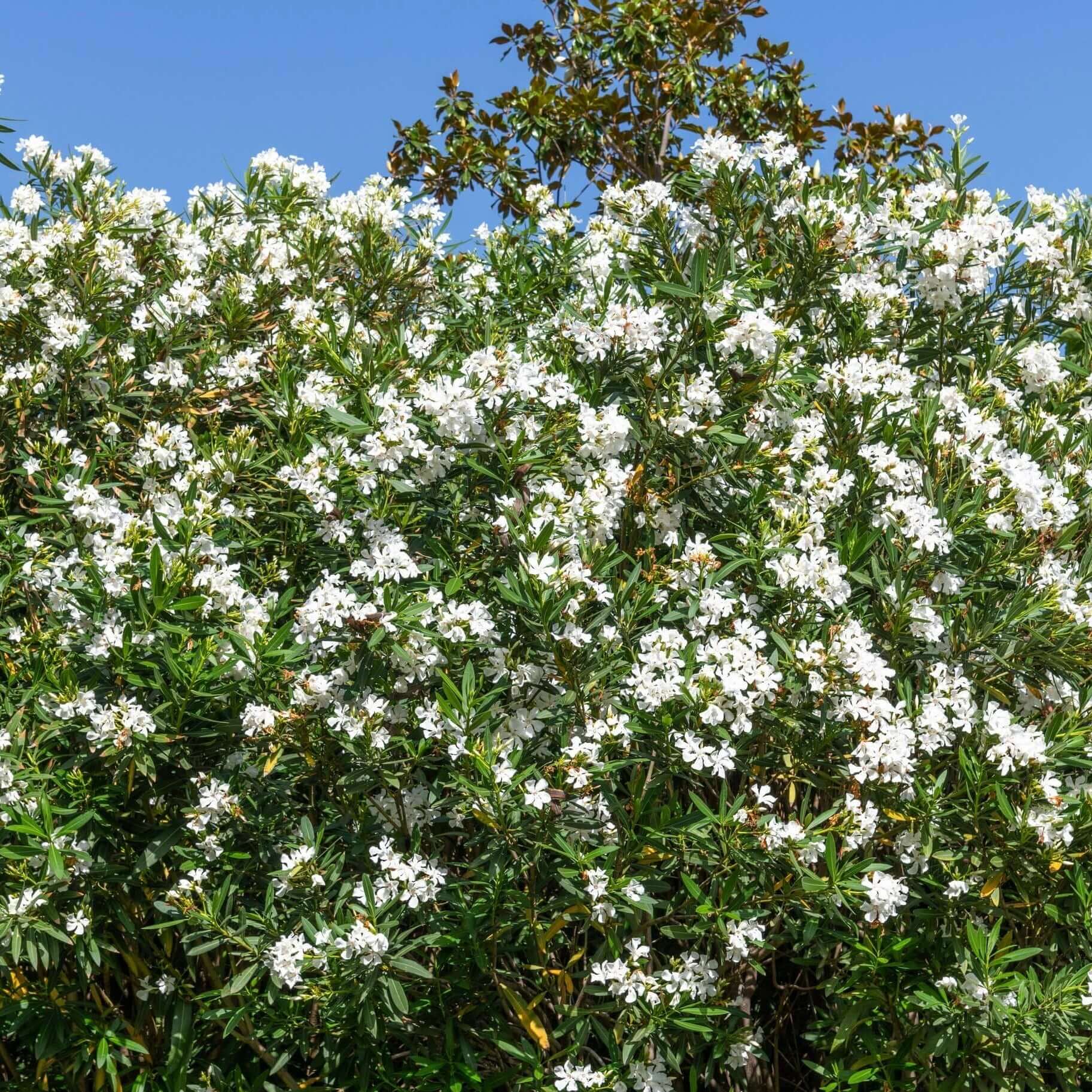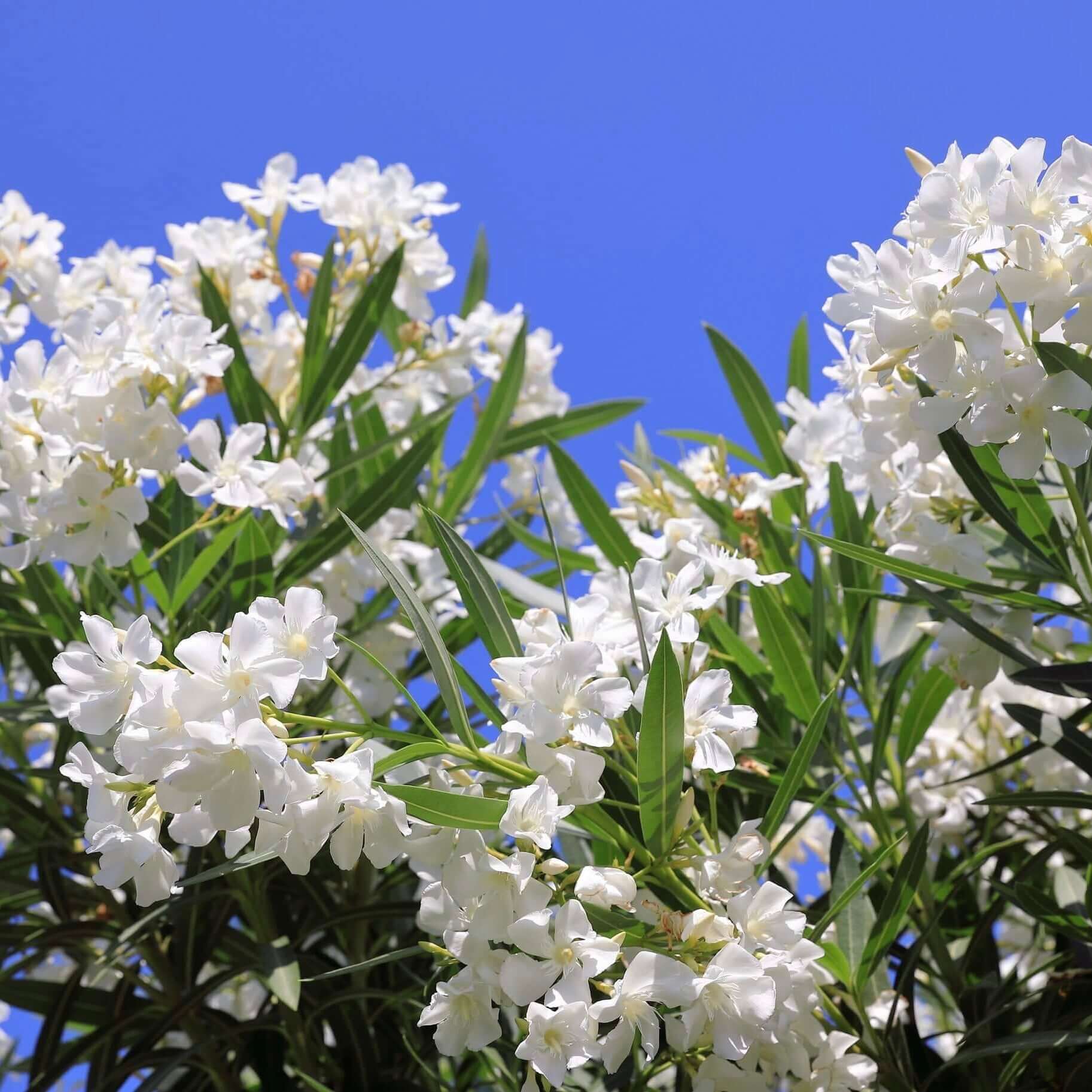
White Oleander
Nerium oleander 'Sister Agnes' Bush
Delivery
24-hour money-back guarantee
Free delivery on orders over $349
Big Project? Call 888-444-1126 for bulk rates!
White oleander is a popular evergreen flowering shrub in California, known for its profusion of white flowers that bloom from late spring through fall. ‘Sister Agnes’ is considered the best among white oleanders.
Resilient and fast-growing (2-3 ft./year under optimal conditions), Nerium oleander tolerates drought, heat, wind, salt spray, and poor soil. White oleander can grow up to 20 ft. tall but is easily maintained at a lower height and desired shape. Easy-to-grow, low-maintenance, and adaptable, oleander can be used as a hedge, privacy screen, background shrub, border plant, or patio container.
How big does White Oleander grow?
When does it bloom and what do the flowers look like?
What kind of light and soil does it prefer?
Does it need pruning or special care?
15-30 ft.
10-15 ft.
Low
Pollinators, Bees, Butterflies
Perfect Your Landscape With Expert Help
Customize your yard with confidence. Schedule your free consultation today and bring your outdoor space to life!


